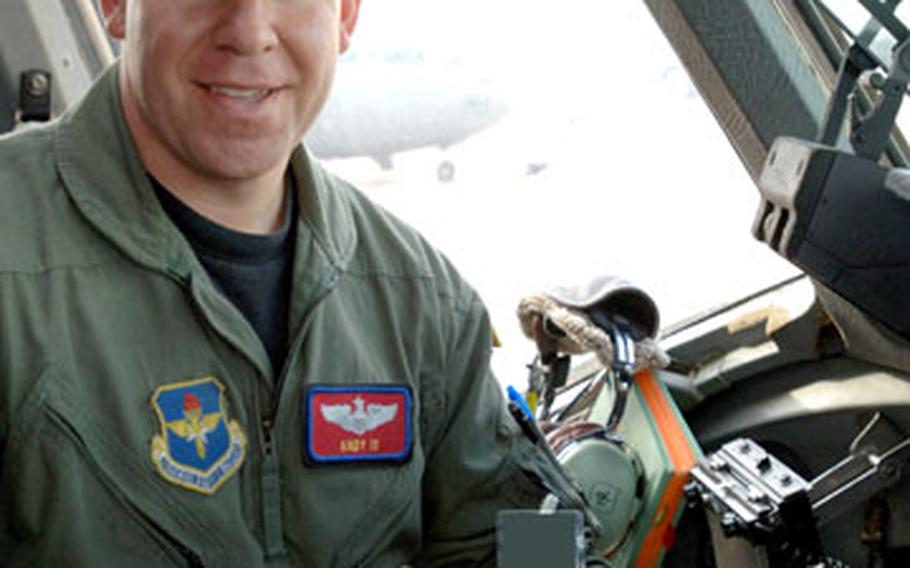
Capt. Andreas Ix received the 2005 Koren Kolligian Jr. trophy, given for “outstanding feats of airmanship,” for landing his C-17 Globemaster after a red-tail hawk smacked into the plane’s nose cone and broke it off. (Michael Fletcher / Courtesy to Stars and Stripes)
ARLINGTON, Va. — What happens when a three-pound red-tailed hawk smashes head-on into a C-17A transport flying 300 miles an hour?
“It was the equivalent of a small rocket hitting the plane,” said Capt. Andreas Ix, the pilot during an ill-fated training flight where this actually happened. “It literally punched a hole in the front of the airplane.”
The bird hit the plane during a routine low-level training flight from the Air Force’s C-17 “schoolhouse,” or training base, at Altus Air Force Base, Okla., on March 10, 2005.
The strike caused the aircraft’s nose cone to separate and broke off essential sensors that feed data to the aircraft’s flight control and instrumentation computers.
It seems impossible that a mere bird can cause so much damage to such a big aircraft.
But “bird strikes,” as such incidents are called, can shatter windows, tear important pieces of metal off of airframes, and otherwise cause major damage.
But until the incident with Ix’s C-17, never before had a bird managed to tear the eight-foot diameter nose cone off one of the high-tech transports.
Ix’s efforts to keep the C-17 flying long enough to get back to Altus Air Force Base, Okla., then land it and its six-man crew safely earned him the Air Force’s Koren Kolligian Jr. individual safety trophy at the Pentagon on Friday.
More important for future C-17 aircrews, the actions Ix and his fellow crewmen took that day to keep the aircraft flying are now part of the Air Force’s emergency procedure checklists for the transport.
The checklist means that instead of winging a solution to a growing emergency, the way Ix did, “the next folks who deal with this will hopefully have a lot of answers in front of them,” Ix said.
When the bird hit the nose, the C-17 was only 300 feet above the ground.
“There was a tremendously loud bang, like a sledgehammer hitting a car hood,” Ix said. “I knew it was a bird.”
Outside the plane, debris from the nose cone was streaming over the cockpit’s windows. The speed of the plane was worsening the damage, tearing off electronics the original crash had exposed.
“My gut reaction was, ‘This is not good,’” Ix said.
The immediate problem was height: if the confused computers had forced the plane into a dive at that altitude, “we were two to three seconds away from the ground,” he said.
Ix immediately forced the C-17 into a climb.
“Fortunately, the aircraft was responding at that point,” he said.
Then he headed back to Altus.
It took about 40 tense minutes after the bird first hit the C-17 to reach the airfield, where Ix landed the C-17 without incident.
How did the Air Force know what kind of bird caused the problem?
“I heard there were some feathers left,” Ix said, which were analyzed by the Air Force’s safety office as part of the accident investigation.
Thinking about the hawk’s violent and messy end doesn’t bother Ix.
“I don’t have a lot of good feelings for him,” Ix said.
“It was a game of chicken — and I won.”